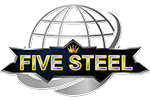In the current market, stick-built curtain wall system is considered the traditional type of curtain wall system in use today. It is a cladding and exterior wall system which is hung on the building structure from floor to floor. In most cases, stick-built curtain wall system is generally assembled from various components, including steel, aluminum anchors, mullions (vertical tubes), rails (horizontal mullions), vision glass, spandrel glass, insulation and metal back pans. In addition, there are various hardware components, including anchors, aluminum connectors, setting blocks, corner blocks, pressure plates, caps, gaskets and sealants.
In most of curtain wall construction, stick-built system is installed by hanging the vertical mullion from a floor edge with a steel angle, while sliding the lower end of the vertical mullion over an insert anchor in the vertical mullion attached below. Vertical mullions are spaced from 1.25 metres (4 feet) to about 1.85 metres (6 feet) based on the spacing of columns, the wind load, and the desired appearance of the facades. The joint between the vertical mullions is also an expansion joint for the floor-to-floor live load deflections, any concrete structure creep movements as well as a thermal expansion joint for curtain wall frames. Meanwhile, these joints must be designed on a job-by-job basis. The rails (horizontal mullions) are then attached to the vertical mullions to create frame openings, one frame opening for the vision area to receive an insulating glass unit (IGU) and one frame opening for the spandrel area to receive the spandrel panel cover (to hide the floor edge, perimeter heating equipment and ceiling plenum areas).
In practical applications, the major advantages for stick-built construction are cost savings and delivery flexibility in a building project. The labor and material costs are less than prefabrication. Also, delivering curtain wall materials to site unconstructed allows for a larger quantity of material to fit on a truck bed for each trip. The major drawbacks of this method are a slower schedule, lower quality final product, and a messier site. Prefabrication lends itself to several different advantages but has one major drawback in the course of construction. The advantages include a better quality final product, faster building enclosure, and a cleaner site. The cost for these advantages is primarily an expensive budget.
We are committed to producing various types of steel products for your choice in your building project in future. Our products are all designed for the fast and easy installation of curtain walls. Contact us if you have any need in your project.
Send your message to us:
Post time: Apr-27-2022




